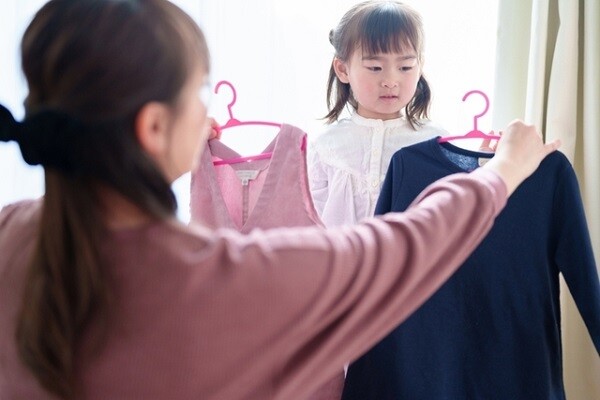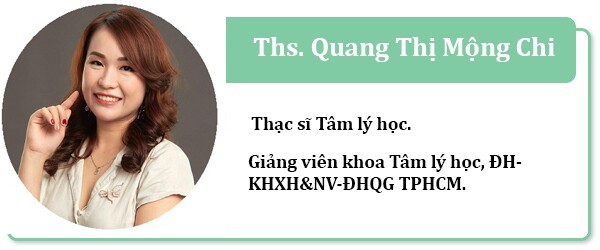Dressing children well and appropriately boosts their confidence in social interactions. This confidence can positively impact their learning abilities and social skill development.
Choosing outfits for girls is not just about their daily wear but also a way for them to express their personalities and creativity. By involving them in the selection process, they will learn more about style and aesthetics.

Illustration.
Instilling a sense of dress in children will form a habit of dressing neatly and politely from an early age. This will accompany them throughout their lives, teaching them self-care and forming their unique style.
In modern society, it has become common to dress children, especially girls, fashionably and stylishly. However, some argue that “girls shouldn’t be dressed up too much.” This statement has sparked controversy and calls for deeper reflection.
One of the main reasons for this view is the concern about creating pressure, making children feel the need to maintain a perfect appearance constantly. When dressed too conspicuously or elaborately, children may face unrealistic expectations from themselves and their environment.
Regarding this, psychologist Quang Thi Mong Chi shared insightful thoughts, helping parents gain a broader perspective and guiding children to understand their true worth, creating a comprehensive development environment.


What does the expert think about the statement, “Don’t dress up your daughter too much”?
Beauty is something that humanity has always pursued, and most of us want to become more beautiful, not just in our eyes but in the eyes of others. So, why deny girls the pleasure of dressing up?
If this perspective stems from the fear that children will develop a skewed perspective, paying too much attention to external beauty at the expense of internal values, the solution is to guide them toward appropriate beauty and balance within financial means, context, and respect for better values rather than prohibition or belittling external beauty.
After all, as we know, dressing appropriately can enhance one’s physical features and is a significant advantage in making a good first impression, boosting children’s confidence and easing their path in life. Thus, raising children, especially girls, entails guiding them in developing both internal values and external factors.

What are the psychological impacts on children, especially girls, when they attach too much importance to appearance and outward form?
The phrase “too much” implies an excessive and negative bias. Specifically, those who focus too much on their outward appearance may experience some psychological issues, such as spending too much time on their looks and neglecting their studies, personal development, and relationships, which will affect their performance in these areas.
At the same time, an excessive emphasis on physical appearance will lead children to pursue external values and demand material things beyond their family’s means. This can also influence how they form relationships and judge others, basing their interactions solely on external values, which will skew their worldview and behavior.
If a child doesn’t have the desired physical appearance or clothing, it can lead to self-esteem issues, resentment, blame, anger, or other negative reactions that can further diminish their image in the eyes of others.

Can the expert share any specific stories or examples regarding this issue? What should parents do to teach children about internal values instead of focusing solely on outward appearance?
Some children develop the belief that they must dress lavishly and follow fashion trends to gain acceptance and admiration from others.
As a result, when their demands for new clothes to keep up with their peers are not met, they refuse to go to school or even bully others because they don’t conform to their beauty standards or dress as fashionably as them.
In this case, the child is forming a skewed perspective on beauty and clothing, which is not aligned with their family’s circumstances or the social context in which they exist. There’s nothing wrong with wanting to look nice, but it should be appropriate, and one shouldn’t impose their beauty standards on others or judge them based on their appearance.
Parents should guide their children from an early age to strike a balance between developing internal values and external factors. This includes teaching them self-care, choosing appropriate clothing for different contexts, and respecting others’ choices and preferences. At the same time, emphasize moral values, kindness, and respect for others, rather than judging solely on outward appearances. True inner beauty has a lasting impact and fosters the development of a strong character and lasting relationships.
Parents can use examples and stories from society, as well as real-life situations from their surroundings, to guide their children. Alternatively, they can lead by example, allowing their values and behavior to serve as a role model for their children.

Are there any principles parents can apply to encourage their daughters to dress appropriately without creating image pressure?
Here are some principles for choosing your daughter’s wardrobe without creating image pressure:
– Clothes should be clean, fresh, and well-presented to feel confident.
– Choose outfits that flatter your child’s body type and help shape their personal style.
– Clothing doesn’t have to be trendy all the time, but it should be contextually appropriate: school, play, parties, and home are all different settings with different dress codes.
– Dress within your family’s financial means, and opt for mix-and-match pieces to create diverse looks without buying excessive amounts of new clothes.
– Choosing sustainable clothing is also beneficial for the environment.
– While it’s essential to respect your child’s clothing choices, they should also respect others’ preferences and conditions. Remember, while dressing well boosts confidence, it doesn’t determine one’s success or likability; those are influenced by the positive values one creates for themselves and others.
Slip into Style: The Best Toe-Post Sandals for Ultimate Comfort
Flip-flops have long been associated with a lack of sophistication and polish. However, there is a range of stylish and comfortable flip-flops that can elevate any outfit. With modern and diverse designs, flip-flops have become a must-have accessory for fashion-forward individuals, offering both comfort and a touch of luxury.
“How to Style Your Jeans Like a Moneyed Korean Beauty”
The style savants of South Korea have crafted an array of denim ensembles that exude youthful elegance, befitting the fashion-forward and affluent. These trendsetters have created a formula for pairing jeans that is both chic and refined, offering a blueprint for those seeking to emulate their sophisticated style. It’s a must-see for fashion-conscious individuals looking to elevate their denim game.
“The Ultimate Guide to Shoe Fashion: The Four Styles Women Should Never Wear”
Footwear is the finishing touch that completes an outfit and showcases your sense of style. Choosing the right pair of shoes that flatter your body shape and occasion is an art, and it’s time to master it. Avoid the common pitfalls and gain the confidence to stride with sophistication in any setting.



































